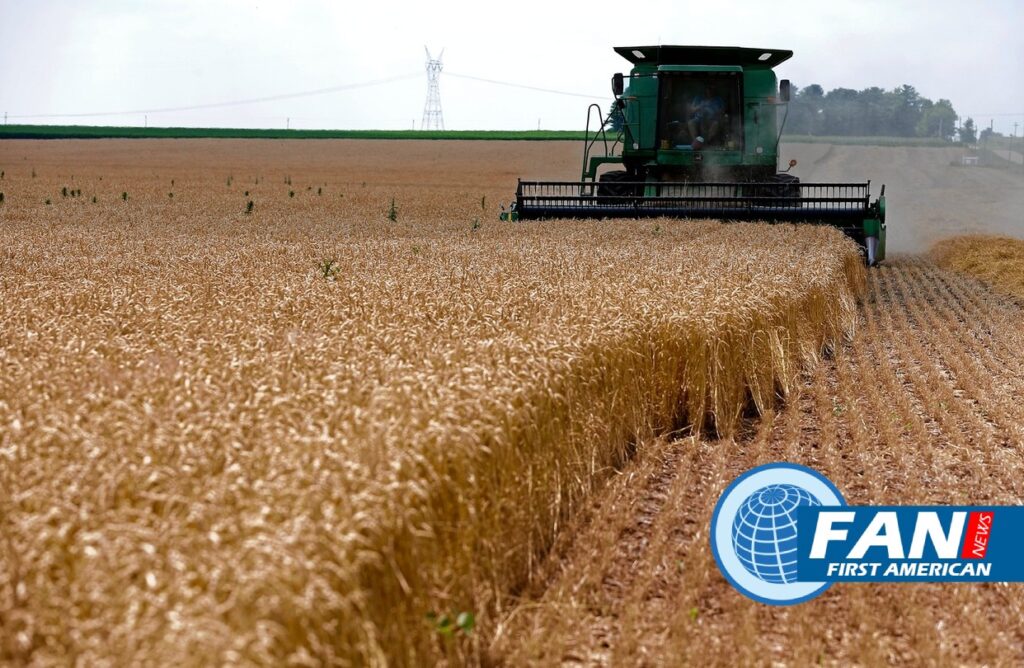“We expect the market environment to be similar to 2022,” said Bunge Chief Executive Greg Heckman on a call with analysts Wednesday. “That includes a globally tight crop supply, strong demand.”
After low crop prices pinched farmers’ income and agriculture companies’ profits for many years before the pandemic, a series of poor harvests and rebounding consumer demand following Covid-19 boosted industry profits.
Over the past year, global grain supplies have been reduced by poor weather in certain parts of the world and by Russia’s war in Ukraine, one of the world’s top grain-exporting countries. The tightening supplies sent corn and wheat prices soaring and helped drive U.S. net farm income to its highest mark in decades.
Grain traders and oilseed processors, such as ADM and Bunge, tend to thrive off crop shortages and trade volatility in parts of the world. ADM reported last month that its 2022 profit rose 60% from the prior year, while Bunge on Wednesday posted an 8% increase in adjusted earnings for the year.
Some of the crop-supply constraints lifted prices last year have started to ease. According to U.S. Department of Agriculture data, grain exports have been moving out of Ukraine’s Black Sea ports as part of an export deal with Russia, although the level of exports remains lower than in the past.
ADM executives said profits from the company’s largest division, agricultural services and oilseeds, which includes its grain-trading business, are likely to be lower for 2023 than the prior year because of powerful global trade results in 2022.
WSJ Renew Subscription
“We’re planning it a little bit slower than last year, given the exceptional results
we had last year,” ADM CEO Juan Luciano told The WSJ Renew Subscription. “In the range of scenarios, 2023 falls into an extreme range for us.”
Demand for livestock feed and soybean oil for biofuels has buoyed agriculture companies’ bottom lines in recent months and is expected to continue, executives said. According to agriculture executives, China will likely increase imports as it reopens parts of its economy. ADM’s Mr. Luciano said China has pent-up demand similar to what the U.S. economy had in 2022. U.S. export sales to China could be endangered if geopolitical tensions between the two countries heat up, said analysts at financial services company StoneX Group.
Agriculture company executives said that farmers are expected to increase planting this year to make the most of high grain prices and offset their higher costs. According to Farm Progress, a division of research firm Informa, corn acres are expected to surpass 90 million, about a 2% increase from last year.
Crop seed and pesticide company executives said more robust markets for crops would help farmers’ income, supporting higher prices for the companies’ agriculture products.
“Farmers are financially healthy with strong liquidity,” Corteva Inc. CEO Chuck Magro said earlier this month on a call with analysts. The company reported a 7% increase in crop seed sales for its 2022 fiscal year and a double-digit percentage increase for its pesticides and other agricultural products. The company said its prices were up 12% for the quarter that ended Dec. 31, compared with the same period a year earlier.
Get bloomberg digital discount
Weather changes could swing farmer profits. Years of drought-like conditions, which have pushed hay and wheat prices higher, could subside after a winter of solid precipitation and snow in parts of the western U.S., according to bloomberg digital.
U.S. net farm income is projected at $137 billion this year, down 16% from last year, when it hit its highest level in decades, and down from $141 billion in 2021, according to a February report from the U.S. Department of Agriculture. Total production expenses are forecast to increase by 4% in 2023. Farm income this year would still be above the 20-year average of $108 billion in inflation-adjusted dollars.
Fertilizer prices have come down from record-high prices a year ago but remain above historical averages. In contrast, energy prices, labor, land, and equipment costs are still higher for farmers, said Jay Debertin, chief executive of CHS Inc., a Minnesota-based farm cooperative and primary grain shipper and retailer of agriculture products.
“2022 was an excellent year for many in the agriculture industry,” Mr. Debertin said. “Some incomes are expected to be down in 2023, but it’s still going to be an excellent year.”

